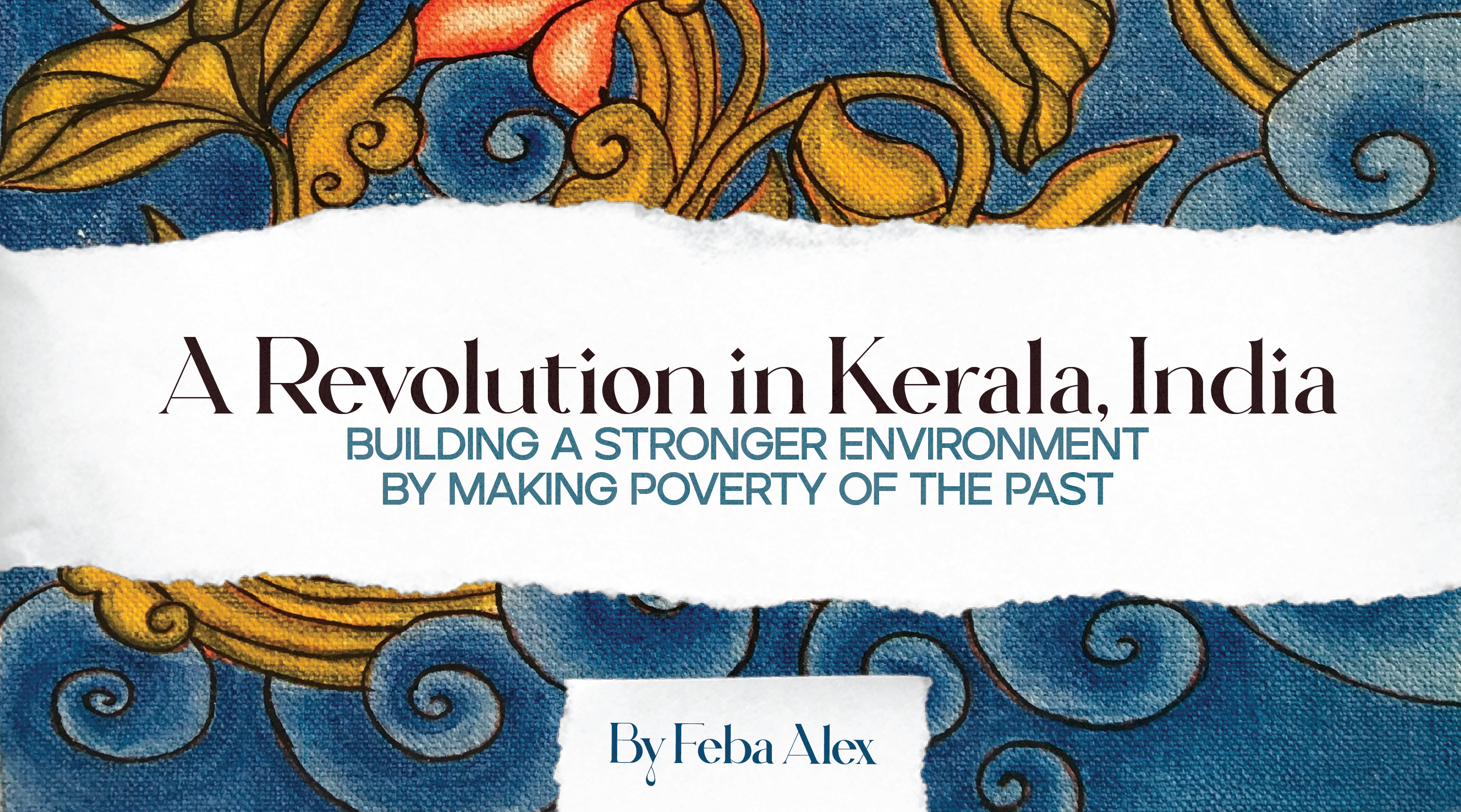Kerala, a state in Southwest India, has seen a continuous drop in poverty since 1994. Between 2011 and 2012, 29.5% of the population lived below the poverty threshold. Today, it is a successful 11.3%, slowly but steadily helping the poor rise above the poverty line.
With its tropical environment, picturesque backwaters, agricultural base, and population of over 30 million people, Kerala is setting an example of how poverty can be eradicated with the support of the government and the community.

https://unsplash.com/photos/29ezCWtMtnM
Kerala’s government is taking steps to eliminate absolute poverty in the state, making it the first in India to do so. Although various depravities remain to be addressed and resolved, Kerala’s innovative efforts and advancements can be seen and measured via improvements in cleaner drinking water, more sanitation programs, accessible healthcare, organically farmed fresh food, and more job opportunities.
Poverty often causes people to put relatively more pressure on the environment, resulting in larger families (due to high death rates and insecurity), improper human waste disposal leading to unhealthy living conditions, more pressure on fragile land to meet their needs, overexploitation of natural resources and more deforestation.
However, according to the IPCC’s Third Assessment Report, developing countries are anticipated to bear the brunt of the overall negative impacts of climate change.
But how did Kerala become a beacon of hope for developing countries? Can the rest of the world potentially follow in their footsteps and eradicate absolute poverty to then produce a healthier environment? Let’s have a look.
How is Kerala responding to its poverty crisis?
- Women-centered self-help groups, such as the Kudambashree Mission, which is also co-sponsored by the Kerala government, select high-risk families with inadequate access to food or water to advocate for. The group then assists women from these high-risk families in finding employment, as well as providing medical treatment, credit assistance to satisfy consumption needs, and implementing other income-generating activities to be able to support their family.
- Household questionnaires are distributed containing several parameters: non-scoring parameters based on a written statement about the characteristics of the household like family health concerns or any hardships, and scoring parameters based on landownership, literacy rate, livestock ownership if any, and other variables. This is then used to calculate the poverty line score for each household. The government then takes action to address the needs of those families who are below the poverty line by trying to identify and deliver on their specific needs.
- Self-sustaining employment programs, such as the Jawahar Rozgar Yojna (JRY), help provide small loans to support self-employment projects or provide marginal work opportunities like farming, lifting 10% of the rural population out of poverty. The National Rural Employment Guarantee Act, 2005 (NREGA), rather than being a developmental initiative, establishes that being able to work is a basic human right. Registered workers may submit a written request for employment; if an employer doesn’t respond to the application within 15 days, unemployment benefits will be paid to the applicant. As a result of this law, local governments are required to keep a “shelf” of projects and work opportunities that can be activated when applicants apply, while state governments are encouraged to provide labor programs.
- The governments significant financial investments in education, housing, health care, infrastructure, agriculture, and land reform has directly elevated the people and its environment. In an effort to establish a decentralized economy, staples have been made affordable at subsidized prices for the underprivileged, pension plans have been strengthened, organic farming has increased, and public distribution systems have been expanded.
“As part of the government’s declared initiative of alleviating extreme poverty, 64,006 families will hereafter come under the governments care,” said Chief Minister, Pinarayi Vijayan.
With just a few examples, the Kerala model of development to reduce poverty can be viewed as an early prototype of increasing the quality of life in a sustainable manner, which in turn has a direct impact in creating a thriving environment; we continue to be a direct reflection of our environment, and our environment a reflection of us.

https://www.niti.gov.in/sites/default/files/2021-11/National_MPI_India-11242021.pdf
According to a number of international publications, environmental problems and poverty are interconnected and contribute to one another’s degradation. Due to a lack of resources, those living in poverty often overuse the resources that are available when their survival is at risk. On the other hand, we tend to overlook the fact that the poor are those who are most vulnerable to the negative consequences of environmental degradation, climate change, and global warming as a whole.
Poverty stresses the environment, while environmental issues create considerable suffering among the poor. In recent years, extreme weather events have contributed to over 96% of disaster-related deaths in developing nations.
This demonstrates how helping people out of poverty directly affects the preservation of the environment and the wellbeing of its inhabitants. When individuals are cared for and can care for themselves, they are better able to care for the ecosystem as a whole.

https://unsplash.com/photos/vpAS89PyGYI
What can you do to help?
Helping is as simple as educating. The long-term solution to environmental justice can be achieved by reducing poverty through education, whether it be through blogs, nonprofit organizations, social events, or any other means of communication that enables you to share new knowledge, skills, healthy culinary practices, or an improved way of life.
You can always start off slowly by volunteering with local self-help groups like New Economics for Women, or by making small investments, one individual at a time by providing access to clean water, nutritious food, resources, education, etc.
Income, resource, and opportunity disparities are some of the primary drivers of poverty. Creating a website or using your social media presence and audience to address these issues, and contacting government representatives can also help reduce disparity.
Lifting people out of poverty is not only a humanitarian solution but an environmental solution.

Leave a Reply
You must be logged in to post a comment.